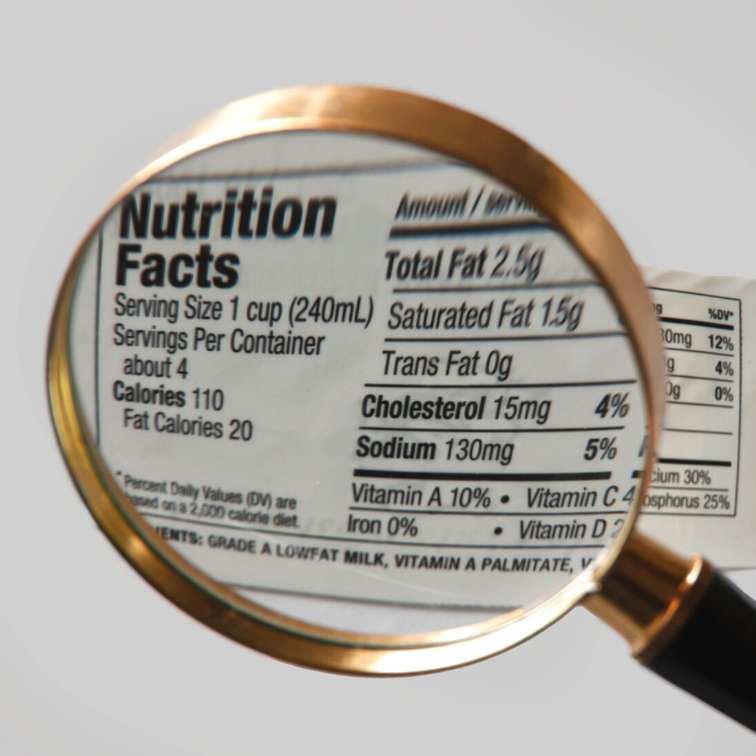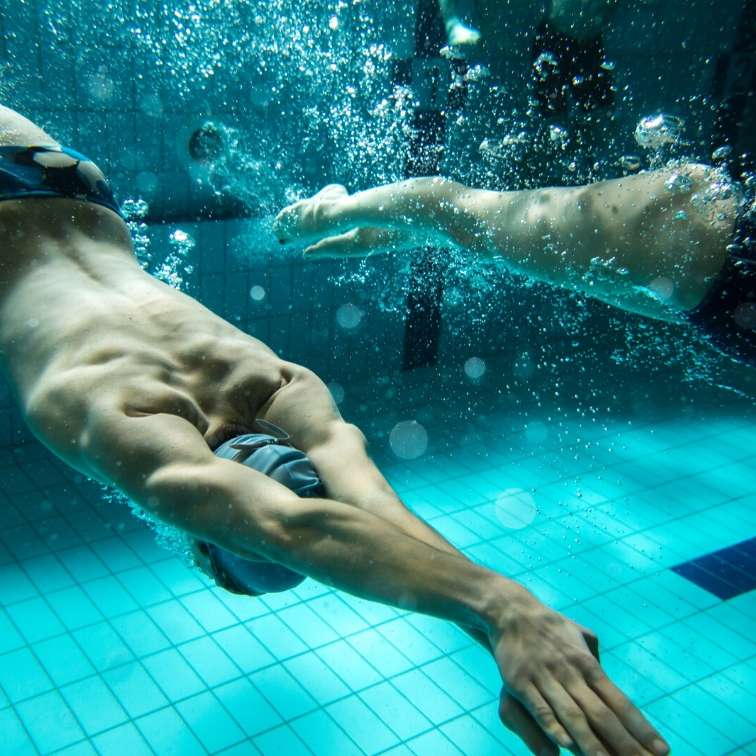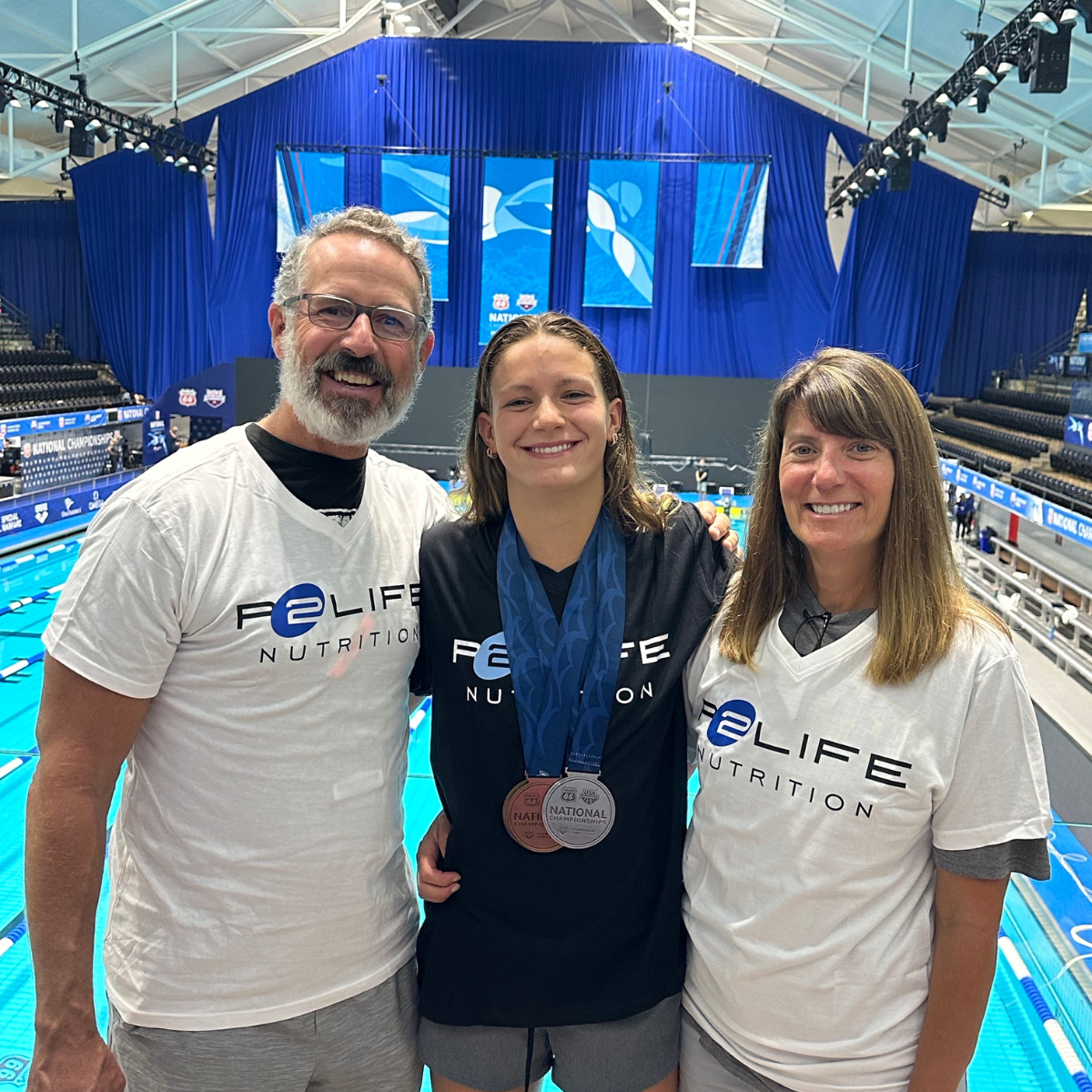
How To Read a Nutrition Label
One scan of a nutrition label and it's enough to confuse anyone that's not a registered dietitian. With ingredients too hard to pronounce, odd measurements, and recommended percentages, it can make anyone leave the grocery store scratching their head. But reading a nutrition label doesn't have to leave you perplexed; use our guide to help you decipher the valuable information that is telling you a bit more about your food, and understand how it could impact your performance and training plan.

SERVING SIZE
Found at the top of the label, this tells you how much you need to eat to get the amount of nutrients listed further down the label. For example, if a serving size is 5 crackers and you eat 10, you'll need to double the amount of calories, fat, protein, etc. that is on the label to get an accurate sense of what you're eating. And speaking of calories, this is the next section on the label that is pretty straightforward. You have the calories that you'll be intaking from each serving and then the amount of fat calories as well. Use both to determine the quality and health content of your food. If a serving has 100 calories and 60 of those are fat calories, it's probably best to put that back on the shelf and opt for a healthier choice.
% DAILY VALUE
The %DV helps you determine if a serving of food is high or low in a nutrient, and luckily part of the math is already done for you. The %DV is calculated off of a 2,000 calorie diet. Focus first on the percentage of nutrients in a serving to determine how much you're getting in your food. As a guide, if you want to consume less of a nutrient (such as saturated fat or sodium), choose foods with a lower % DV — 5 percent or less. If you want to consume more of a nutrient (such as fiber), seek foods with a higher % DV — 20 percent or more. And certain foods, like protein do not list a %DV, but rather only grams are listed. Know how much protein you need and then do a simple calculation to determine how many grams are in your food. For example, a container of plain yogurt might list the protein content at 13 grams per serving, with 1 serving being the entire container, whereas a cup of milk has 9 grams per serving, with 1 serving being a cup.
FATS
Beware of trans fat and saturated fat; these are the ones that raise the bad cholesterol and lower the good cholesterol - not good any way you look at it. And don't be fooled by a label that lists 0 grams (g) trans fat. Because of labeling regulation loopholes, a product can contain up to 0.5g trans fat per serving and say it has none. So the best way is to check the ingredient list: If it includes partially hydrogenated oil or shortening, then there is trans fat in there - don't be fooled!
VITAMINS & MINERALS
The Daily Value (DV) is the amount of each nutrient that's considered sufficient for most healthy adults, but for active swimmers and athletes in training, you may need more of certain nutrients like vitamin D or iron, depending on your body composition, gender, and recommendations from your trainer. Look for at least 10-20% of each vitamin or mineral in your foods.
PROTEIN
Since the average American gets enough protein in their diet, a percentage Daily Value is not required on the label. But for swimmers in training who need a bit more protein for muscle recovery and repair, pay attention to the amount of protein that you're getting in each serving of food. For example, one serving of our NutriBoost shake mixed with water has 12 grams of protein. And definitely eat moderate portions of lean meat, poultry, fish, eggs, low-fat milk, yogurt and cheese, plus beans, peanut butter and nuts.
FIBER
While you don't want to have too much fiber on race day, or before an important event, it is an important nutrition component for overall health. Aim for 3 grams per serving in your breads, pastas, and rice to ensure that you're not eating empty carbs. Other great food sources of natural fiber are vegetables and fruits, so mix those into your meal plan for a balanced diet.
SUGARS
This part of the nutrition label can be deceptive since labels don't really need to differentiate between the types of sugar; you'll have to look at the ingredient list for an accurate idea of what's in your food. Beware of anything that ends in -ose, i.e. glucose, fructose and the words "syrup", "sweetener", and of course, "sugar". For swimmers, it's best to stick to natural sugars from fruits since sugar can sabotage your training performance.
CALCIUM
Look at the %DV for calcium on food packages so you know how much one serving contributes to the total amount you need per day since there is no weight guide provided on a nutrition label. For certain populations, it is advised that adolescents, especially girls, consume 1,300mg (130%DV). So if you're a teenage girl, you'll need to consume more calcium-rich foods, so pay attention to this number.
SODIUM
Your body does need some sodium to function properly and avoid cramps, but too much can put you at risk for heart disease and high blood pressure. Pay close attention to this part of the nutrition label and stay away from processed foods, canned foods, and foods that have a lot of sauces, artificial flavorings, and preservatives. This is where sodium sneaks in and sabotages your nutrition plan.
With these simple guidelines, you can make better-informed food choices while you're planning your swimming nutrition plan and put yourself on the path to optimal performance!
Sources:
www.fda.gov
www.health.com
www.eatright.org
www.heart.org











Leave a comment
This site is protected by hCaptcha and the hCaptcha Privacy Policy and Terms of Service apply.